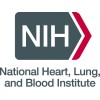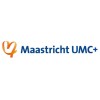
BYM338 in Chronic Obstructive Pulmonary Disease (COPD) Patients With Cachexia
Chronic Obstructive Pulmonary Disease (COPD) With CachexiaThis study will assess the pharmacodynamics, pharmacokinetics, safety and tolerability of BYM338 in patients with COPD and cachexia. The primary outcome will be a change in thigh muscle volume compared to placebo. The study will last for approximately 24 weeks.

Anxiety and Depression in Patients Hospitalizes for an Acute Exacerbation of COPD
Chronic Obstructive Pulmonary DiseaseAnxiety1 moreThis study will try to elucidate wheter the impact of a psychiatric intervention in patients hospitalized because an acute exacerbation of COPD and anxiety/depression and reconsulting at 1 and 6 month after discharge.

Respiratory Physiology Under High Flow Therapy
Chronic Obstructive Pulmonary DiseaseThe aim of this study is to gain knowledge about effects of high flow transnasal insufflation on various breathing parameters like intratracheal pressure conditions, CO2 elimination, breathing frequency and tidal volume.

Home-based in Chronic Obstructive Pulmonary Disease
Chronic Obstructive Pulmonary DiseasePulmonary rehabilitation consists of a multidisciplinary program of care for patients with chronic respiratory disease, which currently encompasses numerous features and physical training methods aimed at maintaining stability clinic for people with Chronic Obstructive Pulmonary Disease (COPD), especially in patients who, even with optimized clinical treatment, continue their decline and symptomatic physical functions and 8 so that these social. goals are achieved the patient with COPD should integrate into a program of RP assiduous and with accompanying several times per week, for several months, which for a number of factors is not always possible. For this reason, it is the research of methodology of RP that hold their effectiveness, but with greater flexibility and viability to people with COPD. On this basis, this study aims to investigate the effectiveness of a program of RP semi-domiciliar in which the patient suffering from COPD can receive guidance and training in person, to develop it partially in own domicile.

Costs and Effects of Three Modes for Disease Management of Chronic Obstructive Pulmonary Disease...
Lung DiseasesObstructiveIn this randomized controlled trial, three contemporary modes for chronic obstructive pulmonary disease (COPD) management in Dutch general practices are compared for costs and effects: usual general practitioner (GP) care (at patient's initiative); regular practice nurse review; and integrated self-management education. All three interventions are based on existing guidelines, materials, and field experiences.

Emphysema: Physiologic Effects of Nutritional Support
EmphysemaLung Diseases3 moreTo determine if enteral nutrition support (ENS) restores normal body weight and improves muscle strength, exercise performance, sensation of dyspnea, and quality of life in malnourished patients with chronic obstructive pulmonary disease.

Oscillating Positive Expiratory Pressure (OPEP) Therapy in High Risk Patients Following Cardiac...
Cardiac SurgeryCoronary Artery Bypass Grafting3 moreRespiratory dysfunction following cardiac surgery is well documented and due in part to the location of the incision and nature of the surgery. Post-operative pulmonary complications (PPCs) remain a significant problem following cardiac surgery, sometimes causing prolonged length of stay in hospital as well as increased morbidity and mortality; with the greater risk to older adults and individuals with obstructive lung disease. Positive expiratory pressure (PEP) therapy is thought to increase lung volumes and facilitate secretion clearance. The purpose of this study is to investigate whether the addition of oscillating PEP therapy to standard postoperative treatment is more effective in decreasing the incidence of PPCs and increasing functional capacity at time of discharge in 'high risk' patients undergoing elective cardiac surgery.

High Flow Nasal Cannula vs NPPV in Moderate Chronic Obstructive Pulmonary Disease Exacerbation
COPD ExacerbationFor moderate AECOPD(pH<7.35), several guidelines have strongly recommended NPPV as standard therapy, which can reduce the rate of intubation and mortality. A few previous studies have shown that HFNC can efficiently improve alveoli ventilation and breathing pattern in some severe AECOPD patients. Therefore, we hypothesize that HFNC is not inferior to NPPV for preventing endotracheal intubation in moderate AECOPD patients. To assess this hypothesis, we performed a multicenter, randomized, noninferiority trial of HFNV vs NPPV in moderate AECOPD patients.

Tele-spirometry in Primary Care-Randomized Clinical Trial Cluster:Telemedicine in Chronic Obstructive...
Chronic Obstructive Pulmonary DiseaseThe purpose of this study is to determine the effectiveness of telemedicine multifaceted intervention in symptoms patients with chronic obstructive pulmonary disease.

The Effect of Twice Daily vs. Once Daily Bronchodilation on Hyperinflation in COPD Patients During...
Chronic Obstructive Airway DiseaseTo study the effect of twice daily dual bronchodilation versus once daily single bronchodilation in patients with chronic obstructive pulmonary disease on 24-hour static and dynamic hyperinflation.
